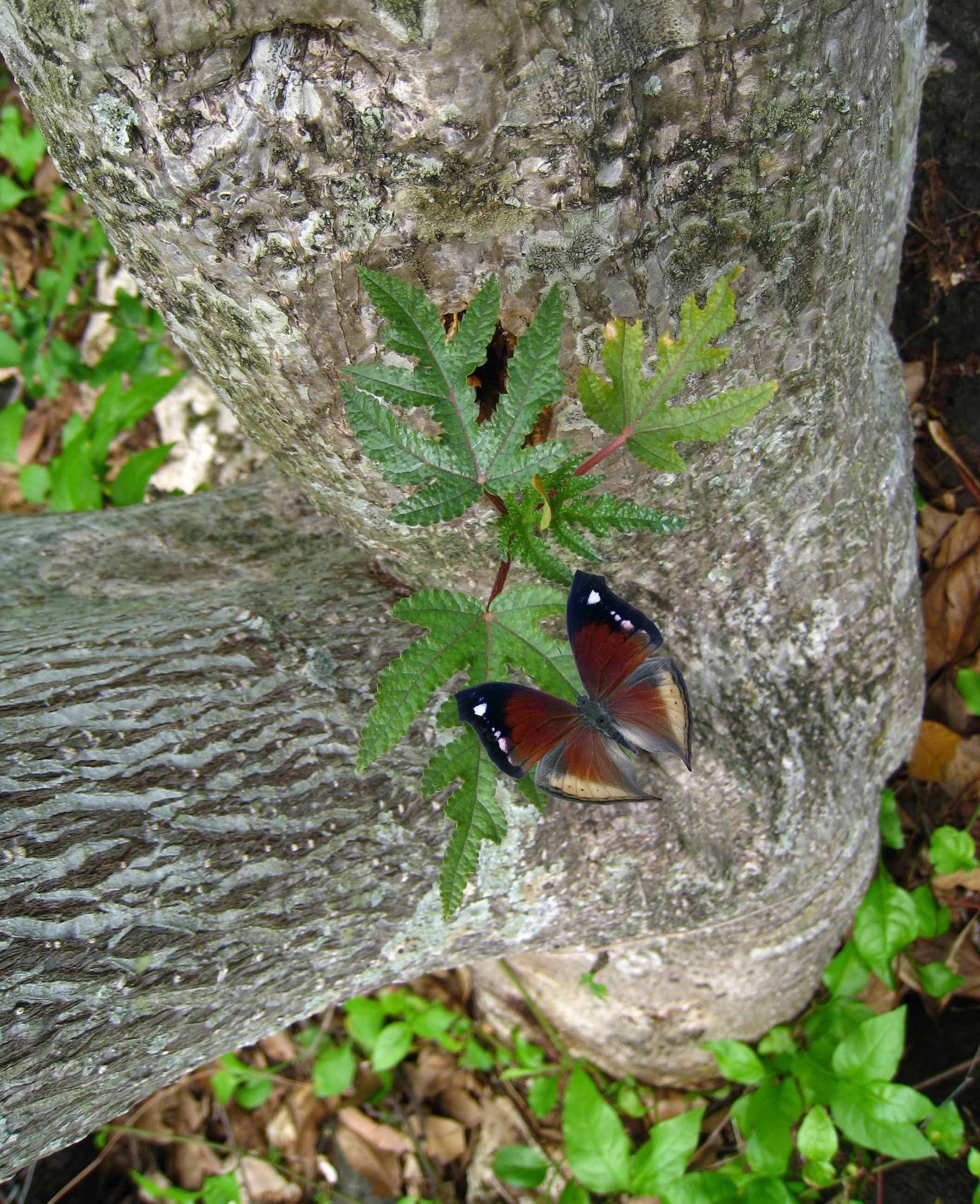Salamide d'Augustine
Salamis augustina
IUCN (International Union for the Conservation of Nature) Conservation Status: Critically Endangered, CR
The butterfly Salamide d’Augustine, Salamis Augustina, is endemic to La Réunion and since it forms part of the Salamis family, is native to Africa.
Males and females show little sexual dimorphism (i.e they resemble each other morphologically). Their anterior wings are brown with beige spots, sharp and sickle-formed. At rest, the adults look like dead leaves, allowing them to merge in the vegetation and to therefore dodge more easily its predators.
The biolgyof this species, which has been well studied, still leaves some doubts concerning its altitudinal distribution and the absence of specimens in the summer at low altitude. Adults are not present below 300 meters.
At the CBNM, Conservatoire Botanique National des Mascarins, located in Saint-Leu, females lay, in winter, a large amount of eggs, glutinated to each other and glued under the large leaves of the Bois d’Ortie (Obetia ficifolia), an urticose, endemic to La Réunion and listed endangered by IUCN.
The caterpillar forms of the butterfly Salamide d’Augustine are of a dark brown color, hairy and gregarious. After 3 weeks, they transform themselves into chrysalises, grouped together in large numbers, under the leaves and stems of defoliated plants (ready-to-fall plants). They are brown and bear 2 symmetrical white teeth at the end of the thorax.




 Français
Français In Progress
In Progress